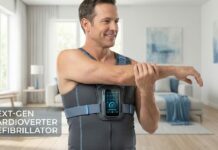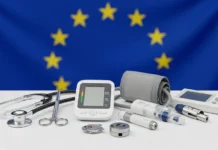The Center for Devices and Radiological Health (CDRH) of the US Food and Drug Administration (FDA) has released a discussion paper seeking input on the most effective methods for advancing health equality in clinical research using medical devices.
In order for the data gathered from the research to be able to offer an understanding of device performance across populations, medical device clinical trials should suitably reflect the community that is meant to utilize the device given the variety of the US population, according to the report.
The study was created in support of the FDA’s strategic goals for 2022–2025, which include facilitating access to and availability of medical technology for all populations. It also serves as a supplement to a draft guideline on clinical research diversity that was released in April.
According to the FDA, there are three elements that may support health equity in research that accurately represent the target audience for a certain medical device.
Among them are:
- Assessing the differences in the illness or condition’s burden among the target user group. According to the FDA, this feature can help sponsors comprehend how much specific elements (such access to treatment, comorbidities, socioeconomic status, and demographics) might affect the frequency, severity, and incidence of an illness or condition.
- Recognizing the differences in physiology, anatomy, and pathophysiology among the US intended use population with relation to the origin, progression, and prognosis of a certain illness or condition under research. According to the agency, it may be important to understand potential differences in device performance and may help identify mechanisms or potential causes for those differences to occur due to variation in these elements across the US intended use population.
- Assessing how the research population’s exposure to various outcomes may be introduced, made worse, or mitigated by the device technology. The agency says it is very important for FDA to know if the technology might work differently in different groups for the purposes it was made for.
Dive Brief:
- On Monday, the Food and Drug Administration said that it is looking for input on health equality for medical devices in order to guide a possible regulatory strategy on the subject. Comments on the paper are welcome until October 4.
- The FDA provided its thoughts on how sponsors might choose research populations that accurately represent the intended use of a certain medical device in the discussion paper.
- The Center for Devices and Radiological Health has identified health equality as one of its strategic goals. The discussion paper is a part of this effort, which also contains recommendations for diversity action plans.
The FDA said that these factors may overlap and that data from a technological review of a device might influence a judgment about the course of a disease. According to the FDA, combining data from these three factors might provide sponsors a thorough grasp of study question elements that could have an impact on device performance or clinical outcomes.
By taking these factors into account, sponsors may be better able to determine whether or not differences in outcomes are expected between patient populations, according to the FDA.
The organization wants to know whether sponsors should take other aspects into account when choosing a target group to investigate a clinical research topic.
A table that analyzes whether a clinical trial accurately represents the target usage group is also included in the paper.


















